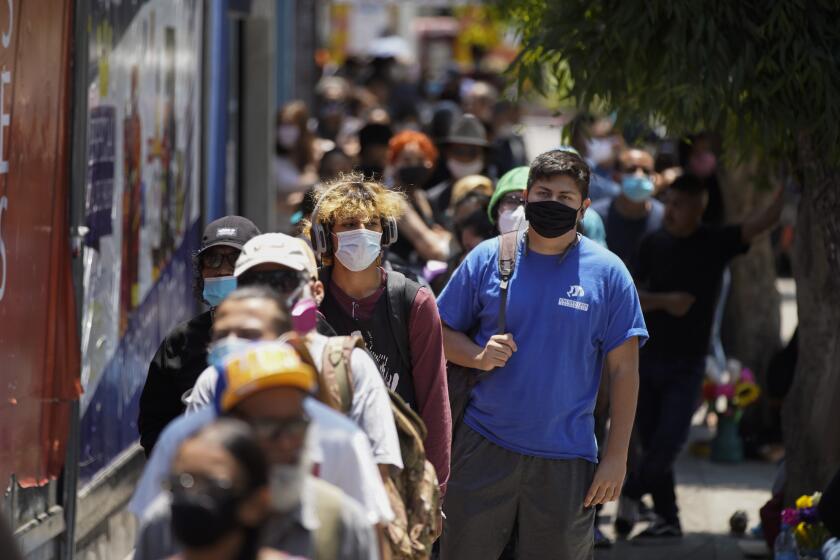Border lines stretch for miles, waits grow to 10 hours in coronavirus crackdown
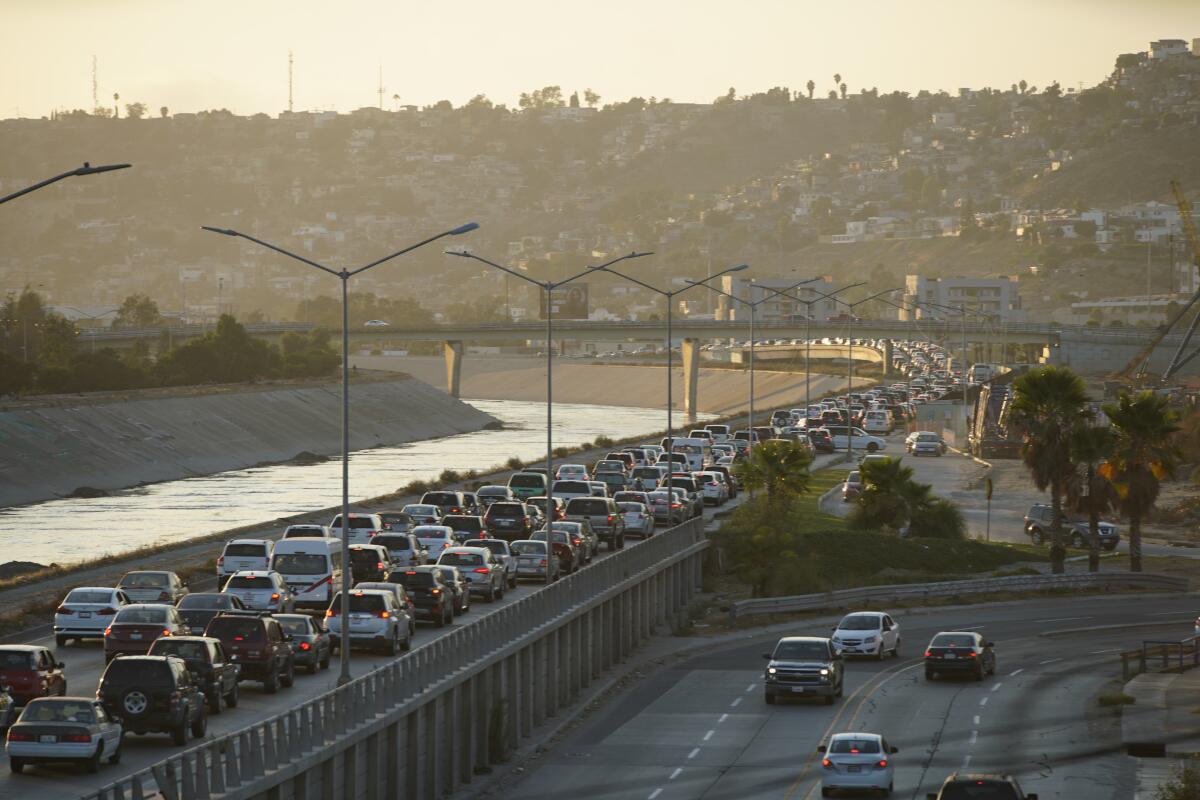
The latest move by Customs and Border Protection to slow traffic from Mexico into the U.S. has caused border traffic jams stretching for miles and waits exceeding 10 hours for those crossing at the San Ysidro Port of Entry.
Border officials say the action, announced late Friday, is designed to reduce the spread of COVID-19 and make people “think twice” about crossing the border. But the backup has infuriated drivers and caused many San Diego- and Los Angeles-area employees to arrive late to work or miss it altogether.
“It’s terrible. Terrible, terrible, terrible. What else can I say? I already called my job and told them I’m going to be late, but I’m probably not going to make it at all,” said Albert Rodriguez, an L.A.-based construction worker who had been waiting for seven hours Monday in the Tijuana traffic.
Several drivers dozed off in their cars or abandoned their vehicles to find a restroom after eight hours of waiting.
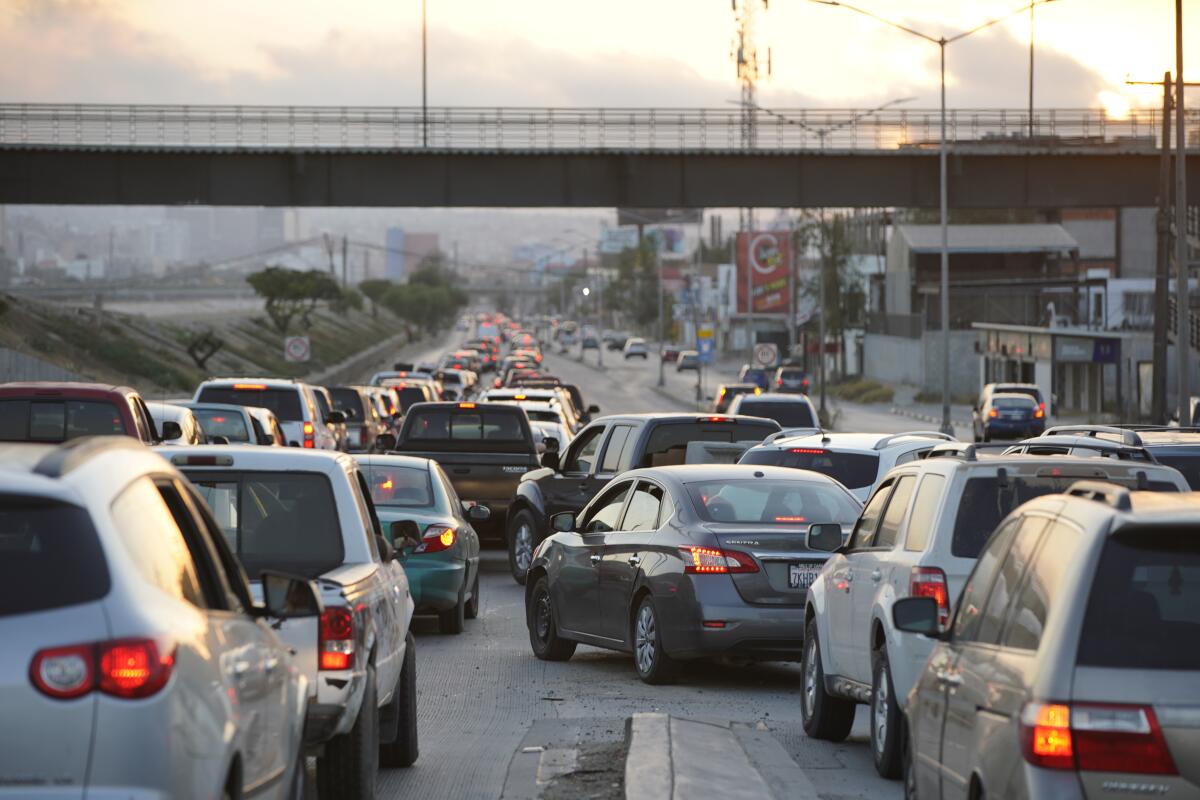
An 87-year-old woman suffered a heart attack and died Sunday in her car while waiting to cross into San Ysidro, Tijuana police said. A handful of vehicles ran out of gas, and one car engine caught on fire during the weekend implementation of the new measures.
Some travelers who got into line Sunday night said they didn’t cross into south San Diego until early Monday morning. Others abandoned their spot in the line.
“We just gave up and we went back to the house that we rent here in TJ,” said Hector Riveros, a Riverside resident. “I thought it would be better in the morning, but it’s not.”
It is the latest action taken by President Trump to partially close the border during the coronavirus pandemic. The administration implemented emergency rules in March that allow the U.S. to rapidly deport anyone arrested for crossing illegally.
Travel restrictions have played havoc with many of the 4 million Mexicans and Mexican Americans living along the U.S.-Mexico border.
Since March, Customs and Border Protection has been reducing staff and operating with fewer vehicle lanes during non-peak hours for travelers who are legally allowed to enter the U.S., including U.S. citizens. At one point in May, some workers, to get to work on time, began sleeping overnight in their cars at the Otay Mesa Port of Entry because Border Patrol stopped processing vehicles between midnight and 6 a.m.
The new coronavirus safety measures include more thorough inspections and education for nonessential travelers. Processing lanes have been shut down, and agents are processing essential and nonessential travelers more slowly, according to the agency.
According to Customs data, Monday morning wait times doubled and tripled at some crossings in the San Diego area compared with normal times. Mondays are typically heavy traffic days.
Only two lanes were open Monday for general processing or those traveling through the border without a radio-frequency identification card, such as a passport card or Sentri card. The Sentri lanes — designated for low-risk travelers who have been pre-approved by Customs and Border Protection — were only slightly delayed, with border-crossers reporting about 40-minute waits, compared with the normal 20-minute border crossings on a Monday.
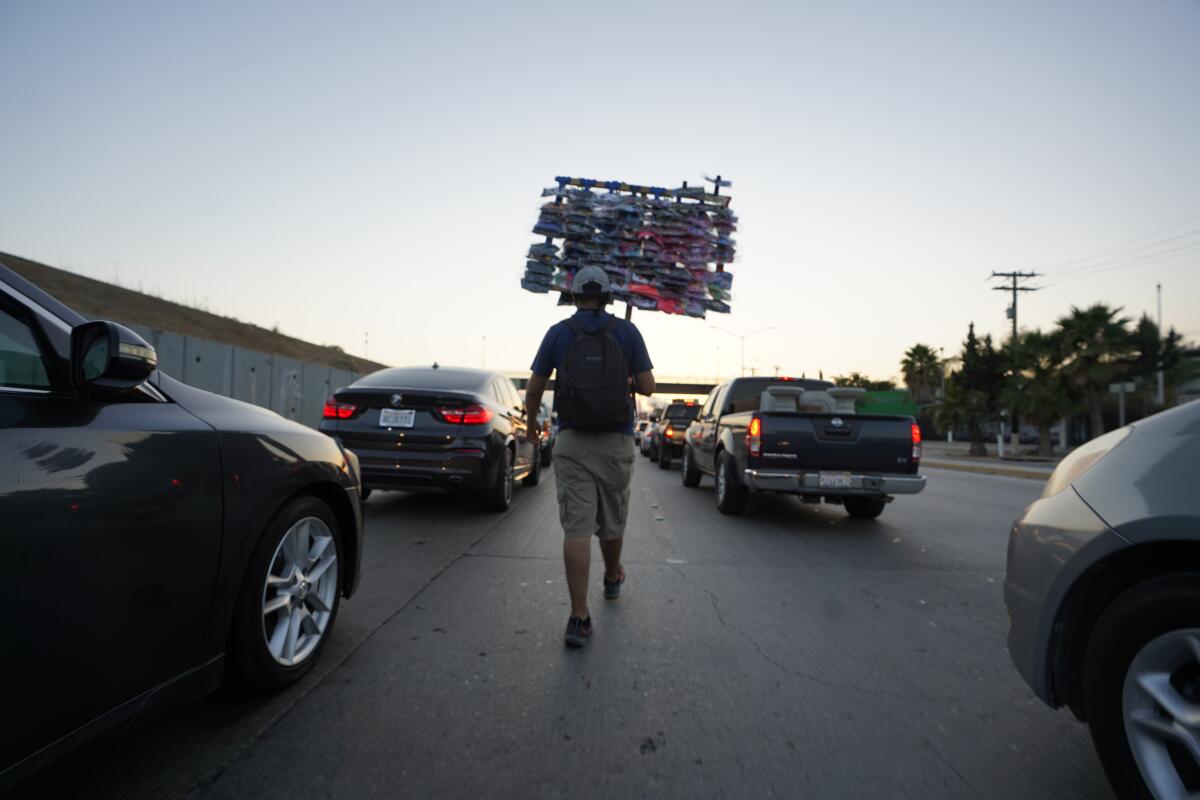
The definition of an essential worker varies from state to state, but jobs that are typically deemed as such during the pandemic include healthcare, food service and public transportation.
Nonessential travelers, such as those going to visit family or the beach or to shop, are now being referred to secondary inspection areas for additional questions, Customs officials said. Border officers will also “provide such travelers with educational material in the form of the Centers for Disease Control and Prevention Travelers Health Advisory Notice to ensure effective understanding of travel restrictions.”
“The goal here is slow the spread of COVID-19,” Customs Branch Chief Jaime Ruiz said in a written statement.
Paola Avila, the vice president of international business affairs for the San Diego Chamber of Commerce, called the actions “concerning.”
“Our essential workforce, from healthcare workers to those who work in the food industry and other service sectors, are now caught in four- to 10-hour-long wait times,” she said. “Increasing border wait times hurt our communities not only economically, with an estimated $7.2 billion annually in lost economic output, but also increases air pollution, endangering public health.”
Nonessential cross-border travel has been limited since March. But the new measures also are affecting essential workers, who are allowed to live in Mexico and work in the U.S.
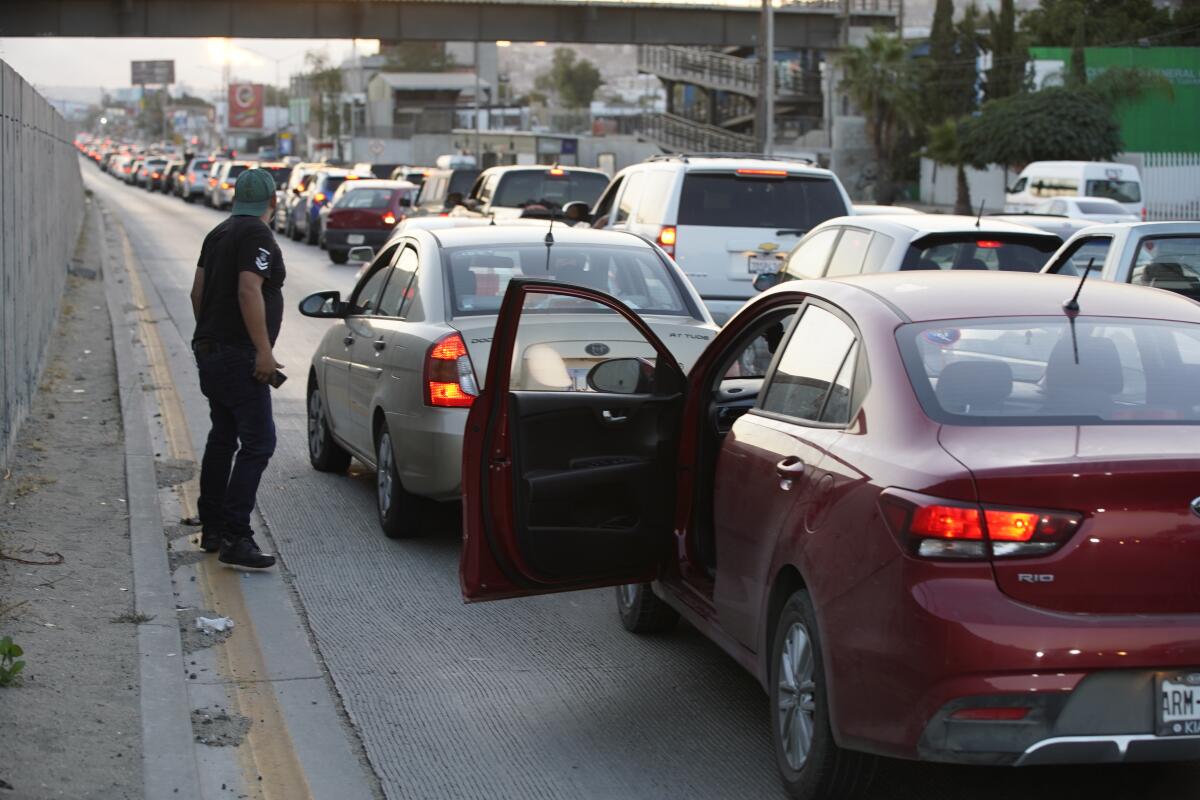
Earl Goold, 55, a shipyard technician in San Diego, pulled his pickup truck into the line at 1:30 a.m. Monday morning but wasn’t going to make his 8 a.m. shift at the marine cargo terminal.
“This is not a very effective way to control the virus,” Goold said, adding that most nonessential travelers had already been deterred by the six-hour lines in recent weeks. “It ain’t going to deter anybody who has to work.”
Earlier this month, Trump considered banning reentry for U.S. citizens who might be infected with COVID-19, according to the New York Times.
The president, who made border enforcement and disparaging Mexico the cornerstone of his 2016 campaign, has also incorrectly referred to Tijuana as “the most heavily infected place anywhere in the world.”
The border city currently has 146 active cases of the coronavirus, a state health official said Saturday. More than 543,000 cases have been recorded in Mexico, according to the World Health Organization. Top Mexican health officials, however, have said their numbers are likely a severe undercount because of limited testing.
“We need people to think twice about nonessential travel and to ask themselves if the travel is worth risking their lives and the lives of others,” said Ruiz, the Customs branch chief. “Mexico continues to experience spikes in positive COVID-19 cases along the Southwest border, and it is our duty to do everything we can to protect our nation, including educating citizens and even discouraging nonessential travel to Mexico.”
At a Yuma, Ariz., event touting his border wall, Trump says, ‘We’re going to do a toll — or we may do a toll’ on cars crossing into the U.S.
Some of those waiting in line Monday morning said the restrictions were counterproductive. Retail workers Brenda Rodas and Alex Garcia, who both live in Tijuana and were crossing into San Diego on foot for their shifts, said the long border waits increased their chance of getting COVID-19.
Garcia said there was no social distancing in the pedestrian lanes or in the Customs and Border pedestrian processing facility, causing many essential workers to get sick.
“It concerns us,” he said. “Everyone is just trying to rush to get across the line that they forget how important it is to keep your distance. They haven’t been doing social distancing inside the CBP building for months.”
Rodas said their employer gave them no special consideration for being late because of unpredictable or long border waits. Garcia said that employer, whom they declined to identify, sometimes wrote them up for being late.
“Sometimes we only work like four-hour shifts,” Rodas said. “So we have to leave our house eight hours before our four-hour shift starts.”
More to Read
Sign up for Essential California
The most important California stories and recommendations in your inbox every morning.
You may occasionally receive promotional content from the Los Angeles Times.
